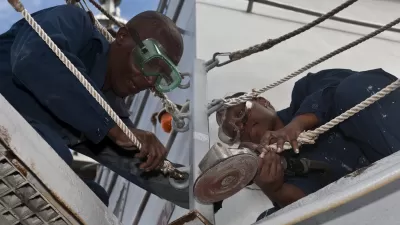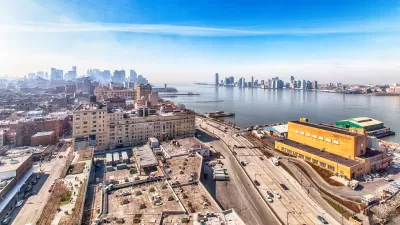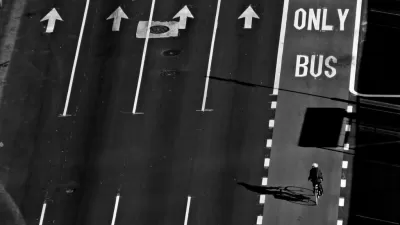The New York Times opinion section includes a call for society, politicians, and business leaders to recognize the importance of maintenance.

Andrew Russell, professor of history and the dean of arts and sciences at SUNY Polytechnic Institute, and Lee Vinsel, professor in the department of science and technology in society at Virginia Tech, take to the pages of the New York Times opinion section to make an appeal for shifting the focus of the infrastructure discussion.
The argument responds to the state of the nation's infrastructure—every variety of which, according to the article, is in "decrepit" condition. But, why?
Why are we in this predicament? One obvious answer is that officials in federal, state and local government do not allocate the resources necessary for preventive maintenance. But their inaction is a symptom of a deeper problem, one that is too seldom discussed: Americans have an impoverished and immature conception of technology, one that fetishizes innovation as a kind of art and demeans upkeep as mere drudgery.
The duo goes on to add: "Once you notice this problem — innovation is exalted, maintenance devalued — you begin to see it everywhere." The problem isn't just with the media or with industrial leaders like Elon Musk, the problem is also perpetuated by politicians, who would prefer new, splashy projects that the mundane business of maintenance. The article cites New York Mayor Bill de Blasio's proposal for the Brooklyn Queens Connector—a hotly-debated streetcar project in a city desperate for bus system improvements—as an example, but Elon Musk's plans for a system of tunnels under Los Angeles and New York Governor Andrew Cuomo's declaration of a state of emergency for the MTA subway system also provide plenty of evidence of those claims.
FULL STORY: Let’s Get Excited About Maintenance!

Alabama: Trump Terminates Settlements for Black Communities Harmed By Raw Sewage
Trump deemed the landmark civil rights agreement “illegal DEI and environmental justice policy.”

Planetizen Federal Action Tracker
A weekly monitor of how Trump’s orders and actions are impacting planners and planning in America.

The 120 Year Old Tiny Home Villages That Sheltered San Francisco’s Earthquake Refugees
More than a century ago, San Francisco mobilized to house thousands of residents displaced by the 1906 earthquake. Could their strategy offer a model for the present?

In Both Crashes and Crime, Public Transportation is Far Safer than Driving
Contrary to popular assumptions, public transportation has far lower crash and crime rates than automobile travel. For safer communities, improve and encourage transit travel.

Report: Zoning Reforms Should Complement Nashville’s Ambitious Transit Plan
Without reform, restrictive zoning codes will limit the impact of the city’s planned transit expansion and could exclude some of the residents who depend on transit the most.

Judge Orders Release of Frozen IRA, IIJA Funding
The decision is a victory for environmental groups who charged that freezing funds for critical infrastructure and disaster response programs caused “real and irreparable harm” to communities.
Urban Design for Planners 1: Software Tools
This six-course series explores essential urban design concepts using open source software and equips planners with the tools they need to participate fully in the urban design process.
Planning for Universal Design
Learn the tools for implementing Universal Design in planning regulations.
Clanton & Associates, Inc.
Jessamine County Fiscal Court
Institute for Housing and Urban Development Studies (IHS)
City of Grandview
Harvard GSD Executive Education
Toledo-Lucas County Plan Commissions
Salt Lake City
NYU Wagner Graduate School of Public Service





























